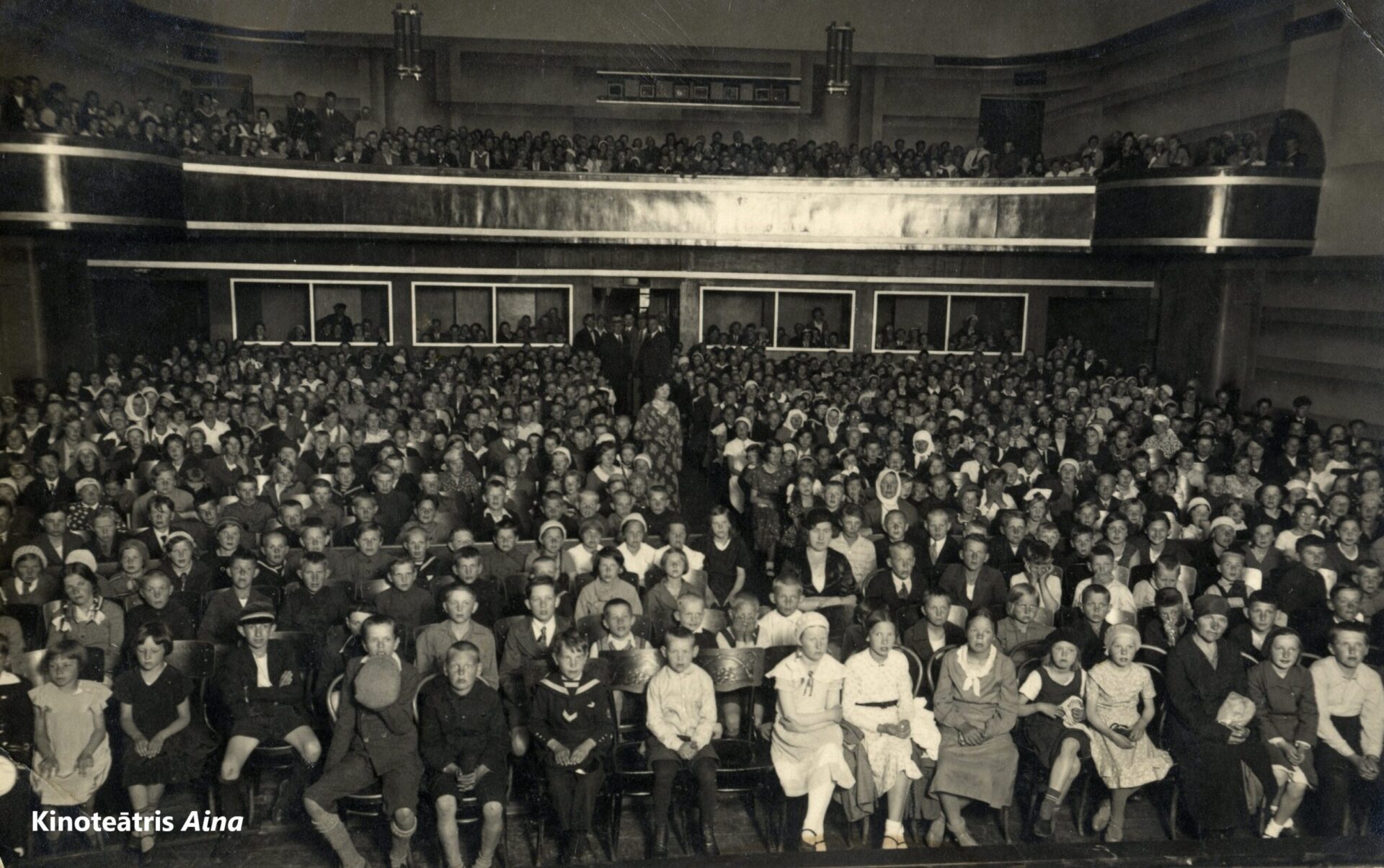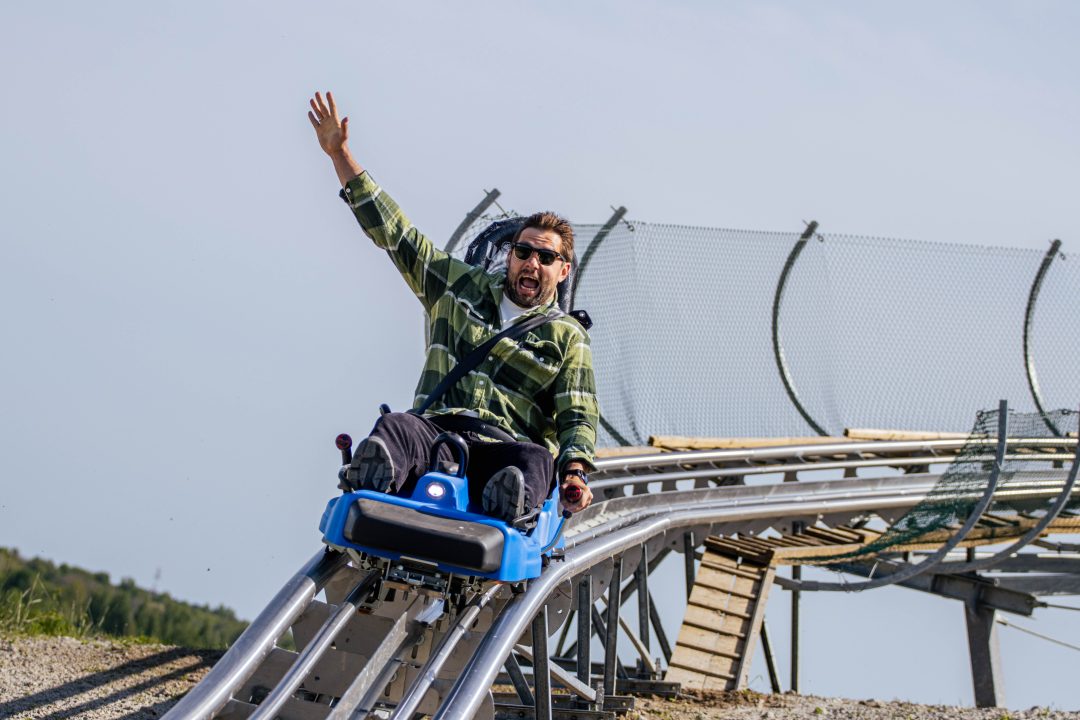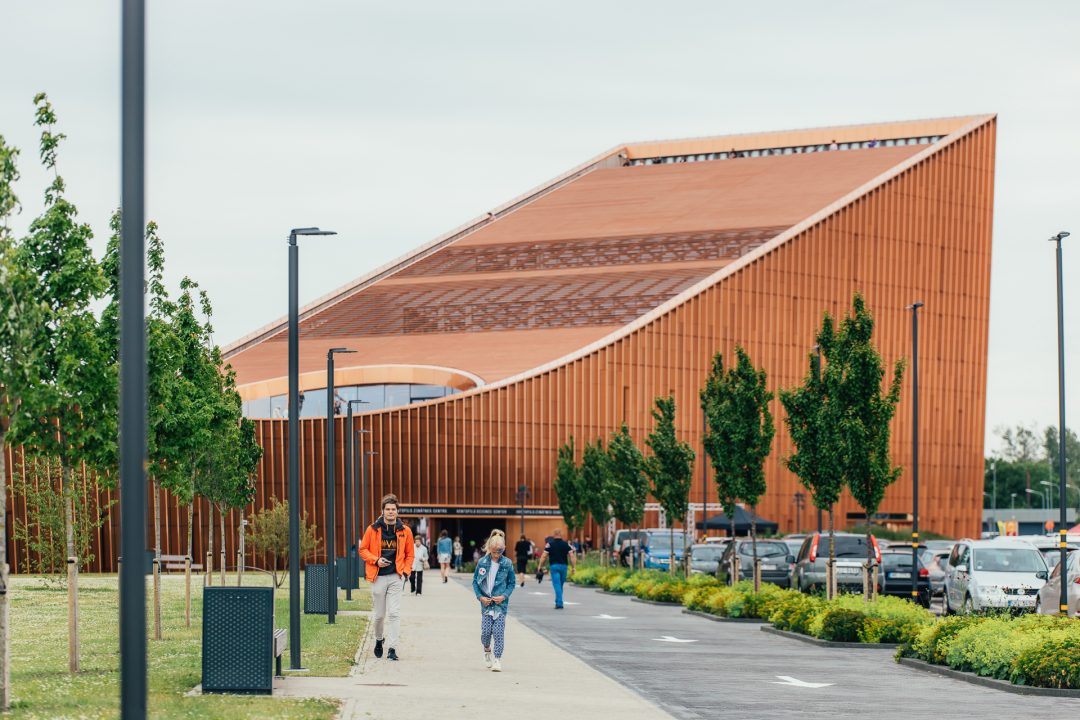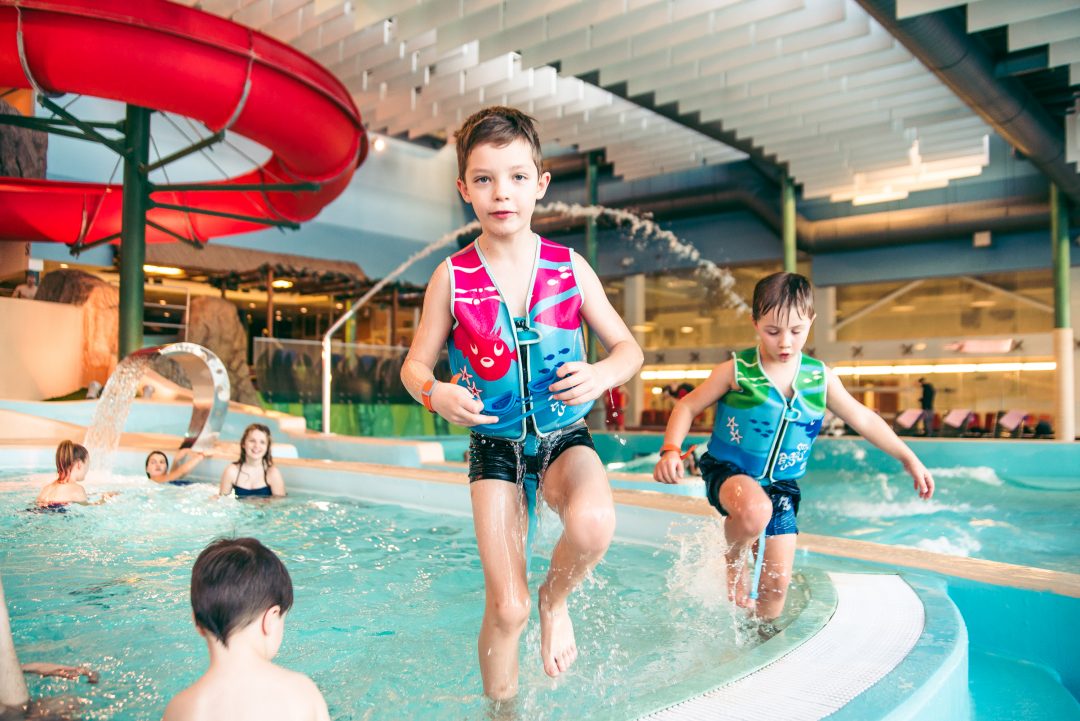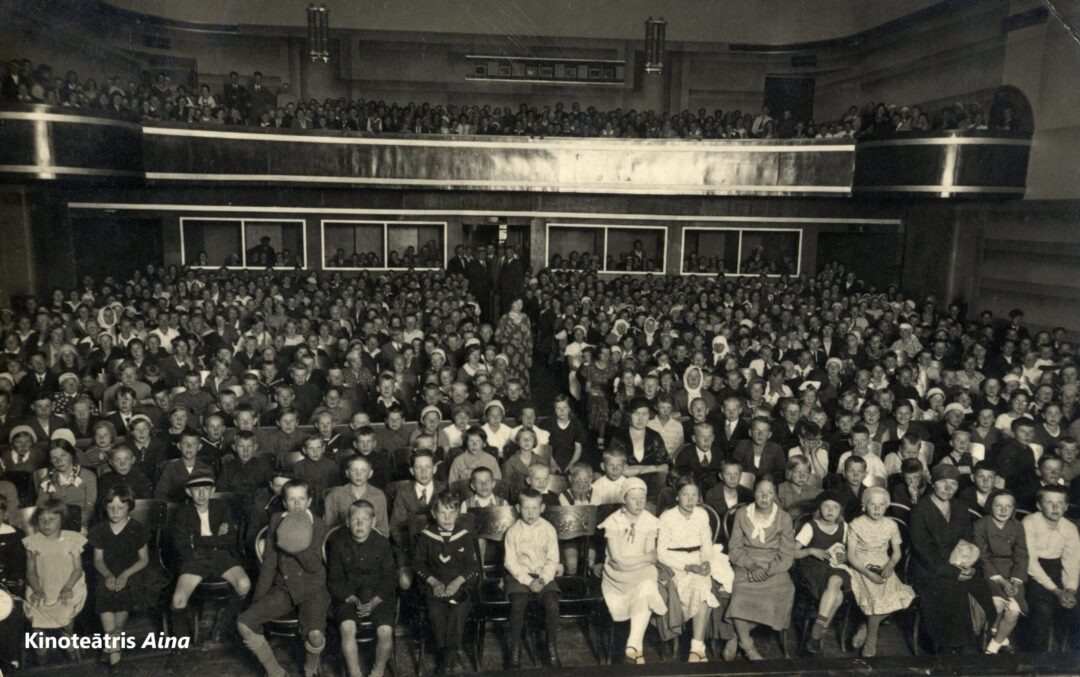The exhibition entitled Motion Pictures. History of Cinema in Ventspils is currently on display in the Exhibition Hall of the Livonian Order Castle, where the historian Māra Dāvida provides an insight into the history of cinema in the interbellum period in Ventspils.
The World War I has just ended, and the population has endured both the Red and White Terror. Despite the modest opportunities, the residents of Ventspils are eagerly trying to restore the pre-war life. The Koloseum cinema also resumes its work, where already in May 1919, a not very entertaining documentary film about the controversial former Minister of Defense of the former Russian Empire, General Vladimir Sukhomlinov, is screened, who was accused of the low level of preparedness of the Tsarist army at the beginning of World War I.
Cinemas in Ventspils
In the early post-war years, the right to cinematography in Ventspils belonged only to the owner of the Koloseum cinema, Mrs. M. Rutšinska, who paid a monthly fee of 60 lats for this privilege to the city. However, the situation changed when Kārlis Krievs was elected as the city’s mayor. He began a fight to revoke the monopoly rights and to increase taxes. From then on, cinema owners had to pay the city 20% of each ticket sold. As a result, instead of the previous 60 lats, the city treasury received 700–800 lats per month. However, the Rutšinskis family’s troubles did not end there. The city mayor discovered that the owners of the cinema had illegally granted “honorary guest” status to 120 people and issued unlimited free tickets. As if that wasn’t enough, it turned out that no one in the cinema administration spoke Latvian. “Such disrespect for the country and the majority language is unacceptable!” said the city mayor Kārlis Krievs through the press.
Soon enough, the Koloseum cinema lost its monopoly in the city. In October 1924, a new cinema, Pasaciņa, was opened almost next to the Koloseum cinema, which was located at Pils iela 18 (now Pils iela 28). The owner of the new cinema was a city councilor and merchant, Ādolfs Stūre. The cinema, with 200 seats, was located at Pils iela 25 (now Pils iela 27). From then on, Ventspils residents had many film options. Films were shown every day in both cinemas. The new cinema offered many different films. For the first time, it was possible to watch the Women’s Beauty Contest in Latvia in the cinema.
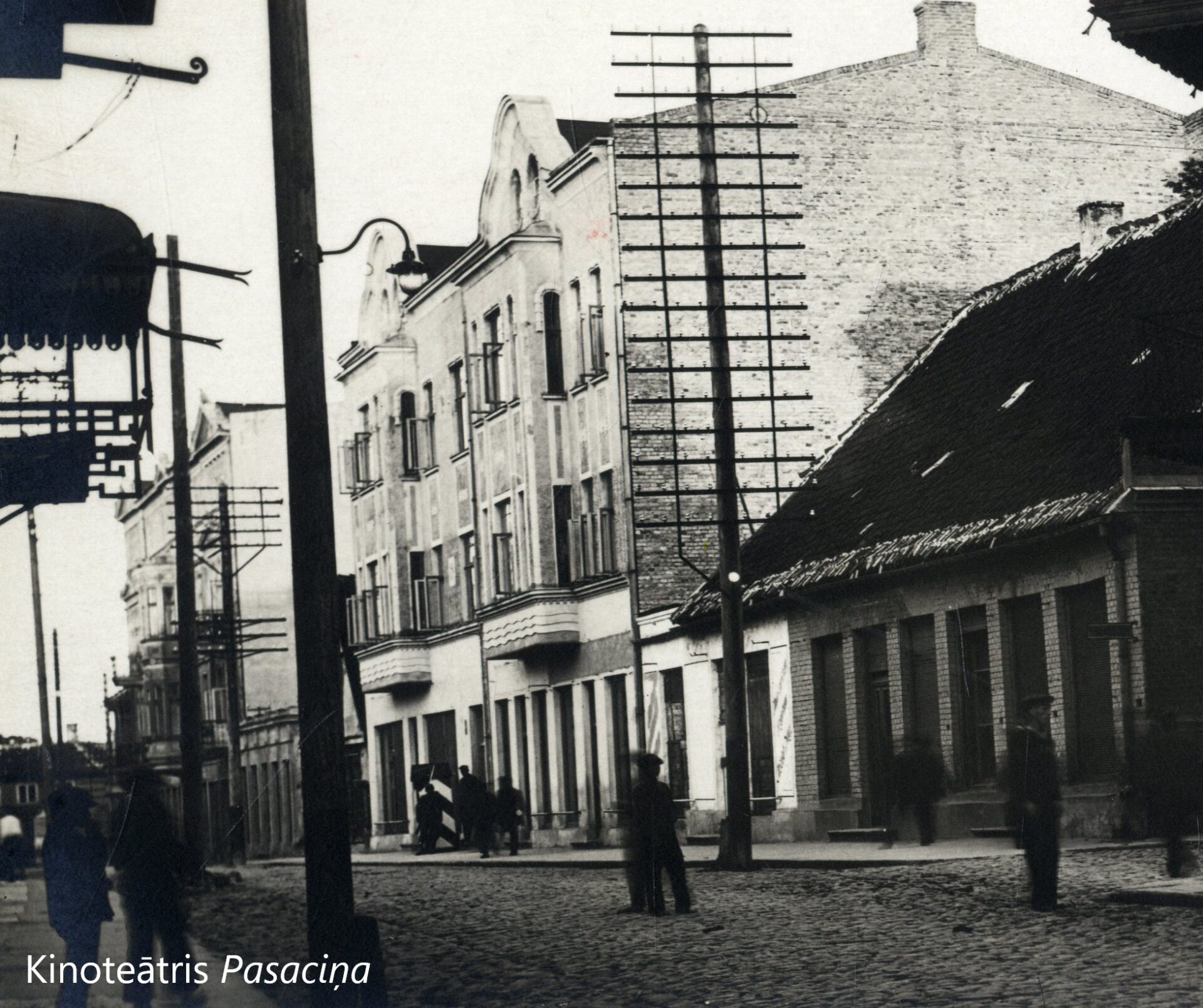
In 1926, Ādolfs Stūre, together with Indriķis Grickus, Ella Bērmans, and Kārlis Geruckis (the projectionists of the oldest feature film made in Latvia, Kur patiesība? (Where’s the Truth?)) established the company Sabiedrība kino “Koloseums”– A. Stūre and merged both cinemas. In the following years, each cinema had its own distinct film schedule.
In 1929, the third cinema, Moulin Rouge, also locally known as the ‘Red Mill’, was opened in the former ‘Družba’ hall (now Ventspils Cultural Centre at Kuldīgas iela 18). The entrance to the new cinema was on the corner of the building above which decorative rotating mills were installed. Shows were only held here on weekends.
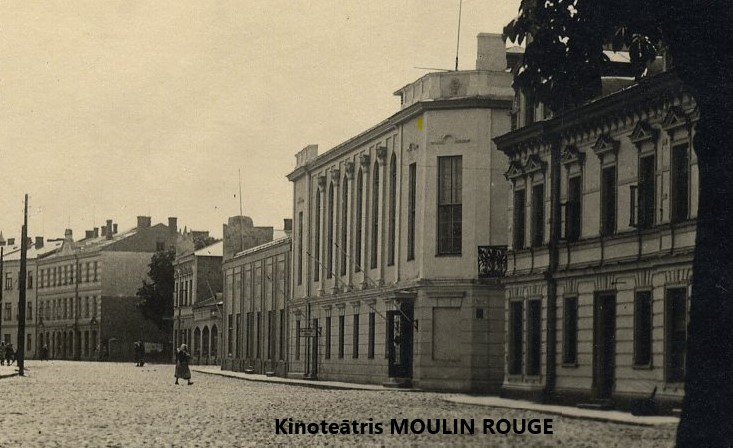
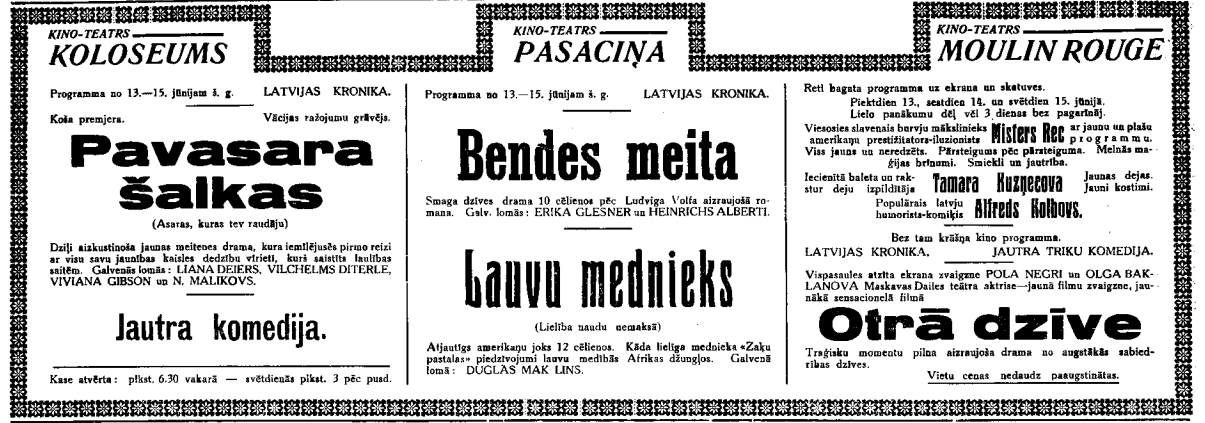
Film schedule
The Koloseum cinema, also known as the Coliseum cinema, was the favourite cinema among film enthusiasts, where mostly melodramas featuring the most famous movie stars of the 1920s were shown. Here, one could see masterpieces such as Casanova with Russian actor Ivan Mosjoukine in the lead role, Anna Karenina with Greta Garbo, as well as the world-famous The Blue Angel, which elevated the 29-year-old actress Marlene Dietrich to new heights of fame. It should be noted, however, that unlike the rest of Europe, the Latvian Ministry of Education banned films that did not conform to certain moral standards, although not for long. The film, albeit “censored”, eventually made it to Latvian cinemas.
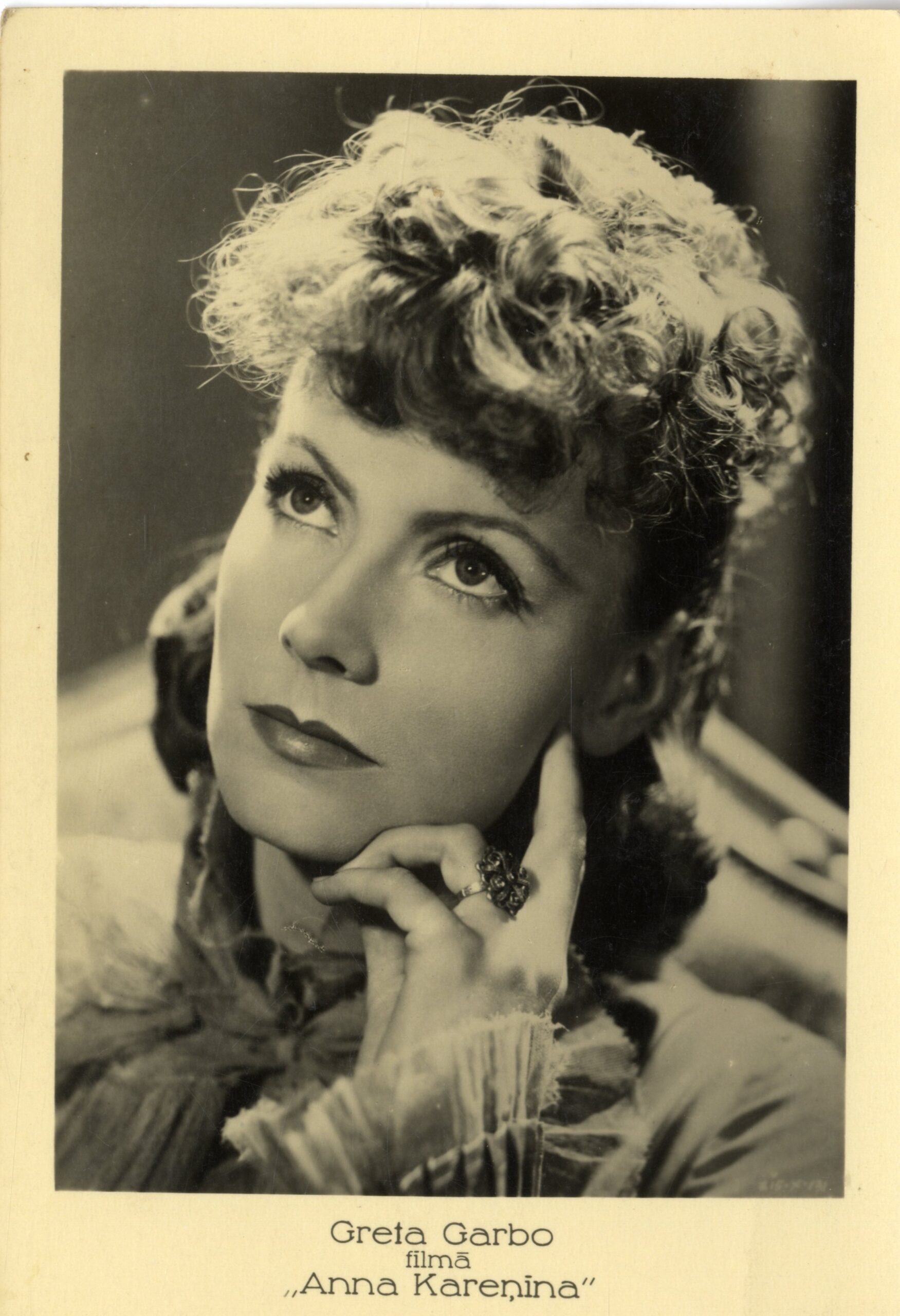
The demonstration of the first sound film, The Singing Fool, was also a serious challenge for the Latvian bureaucratic apparatus. Although ‘talking pictures’, also called ‘sound films’ were eagerly awaited abroad, they caused only unnecessary headaches for our lawmakers. The law required that the text be translated into Latvian. There was no problem with silent films, in which the written text was minimal. But what about speaking and singing actors? The press expressed various opinions – some suggested that sound films should be treated as famous actors’ guest performances, for which various permits had to be obtained, while others questioned the talent of sound film actors (compared to silent films). In any case, in February 1931, the first sound film, The Singing Fool, was also shown in Ventspils at the Koloseum cinema. The cinema owners proudly announced that only sound films would be shown at the Koloseum from then on.
In the 1930s, not only children but also adults became fans of children’s films starring the world-famous Shirley Temple in the lead role. The appearance of the cute little girl on the cinema screens in films such as Curly Top, Heidi, etc. always attracted a large audience.
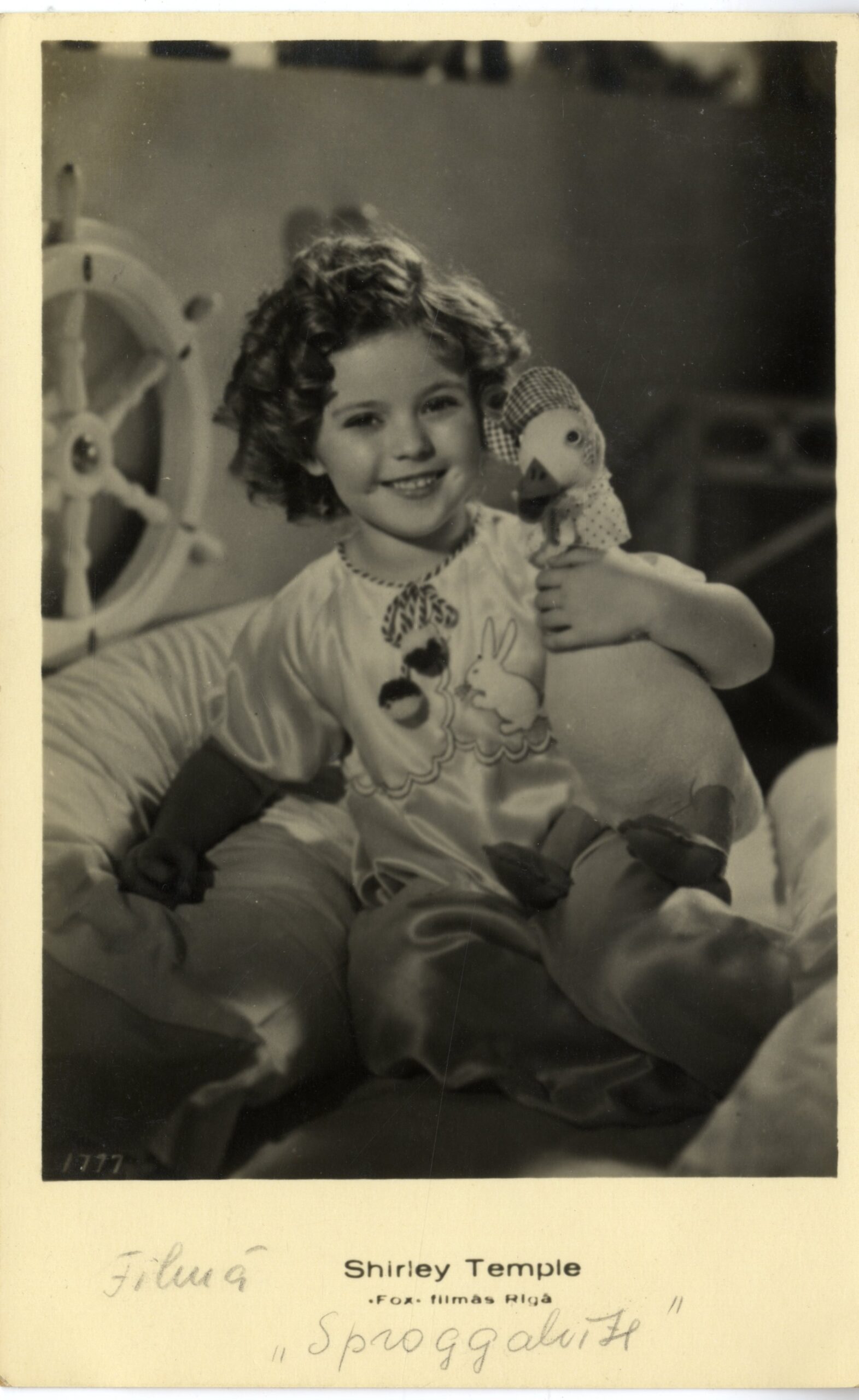
Unlike the Koloseum cinema, the Pasaciņa cinema was popular among street boys. Growing up, they hung out at the cinema windows, which displayed bright posters and photographs of their favourite film heroes. Pasaciņa mainly screened cowboy films, the so-called westerns, and comedies such as Pat & Patachon, The Flying Deuces etc. When Harry Piel’s name appeared on the posters, the cinema was packed.
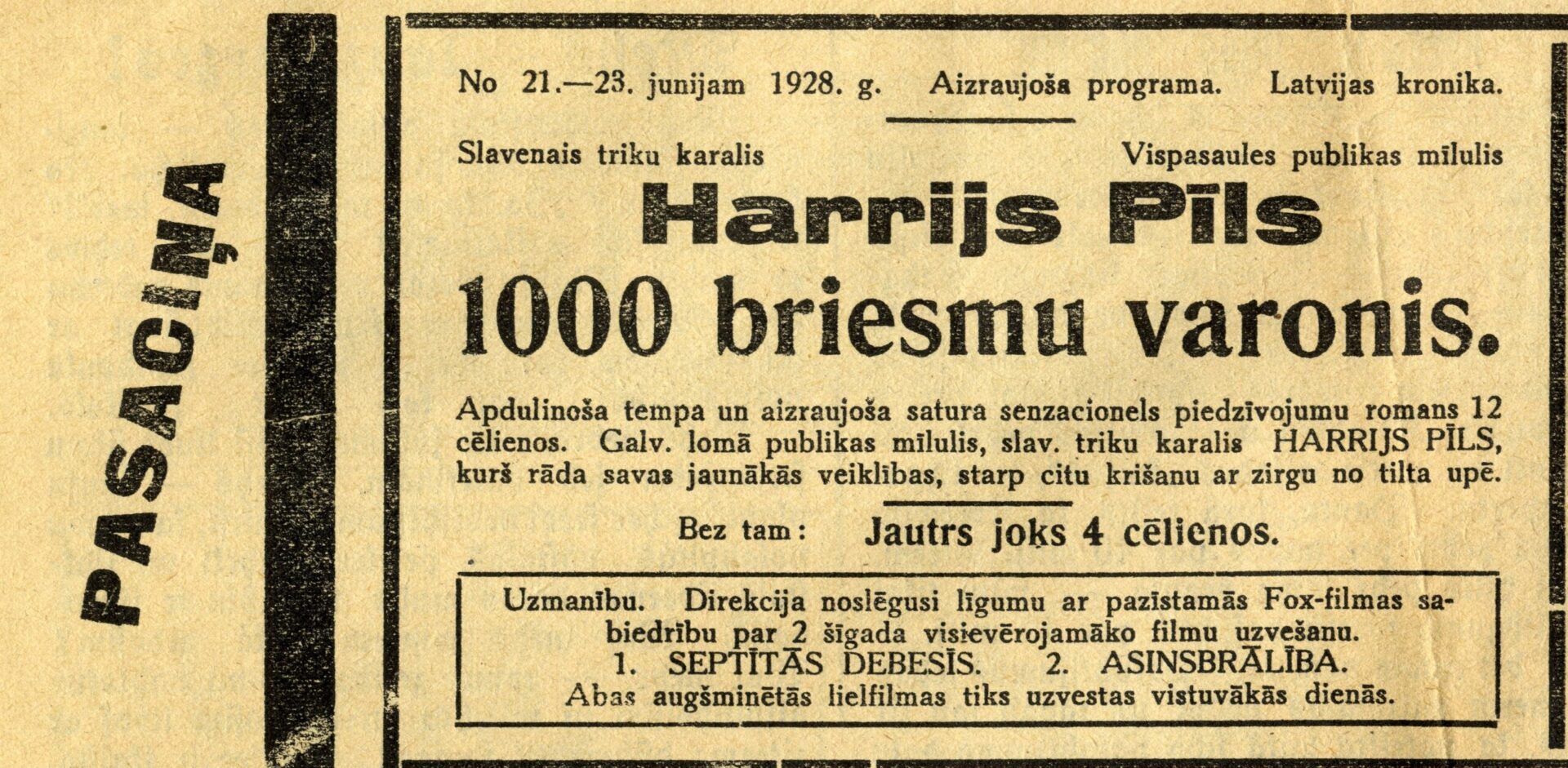
The Koloseum becomes a high-class cinema
In the early 1930s, the favourite cinema of the residents of Ventspils, the Koloseum cinema, underwent significant changes. The owners of the Koloseum cinema carried out a major renovation, or rather, a large-scale reconstruction of the cinema. The cinema hall acquired its current appearance. The reconstruction cost 120 000 lats, but the result was stunning. The number of seats in the hall had doubled, and now 700 viewers could enjoy films.
The seats were arranged on two levels – in the hall and on the balcony. Today it might seem common, but in the 1930s, this seating arrangement was only found in high-class cinemas, such as the newly created Koloseum. The best seats were located in the boxes. A series of boxes were installed on the balcony, among which the most luxurious was the so-called ‘Fifth Box’, which was located in the middle of the balcony and was reserved for VIPs. The hall had parterre boxes with 4-6 seats each, located below the balcony on a small elevation.
The walls of the hall were covered with light brown acoustic fabric. The chairs were also upholstered with fabric. The ceilings of the hall were adorned with three enormous chandeliers with crystal pendants. Those were real chandeliers, each with no fewer than 50 bulbs. Before the start of the screening, the light in the large chandeliers was dimmed down until it became dark, while the first frames appeared on the screen. A strip was provided at the bottom of the screen for subtitles, on which the translation was projected. There was a special structure for the orchestra below the screen, designed for the needs of showing silent films. The accompaniment for silent films was played by a pianist, known as a ‘tapper’. Often, the owner of the Konkurence photo salon, Mrs. Mateusa, played the accompaniment for films, while the popular entertainment master Rutkovskis entertained the audience between screenings. In the 1930s, a disc with a sound recording was played alongside the film projector, which was later replaced by filmstrips with optical audio track on them.
In the autumn of 1939, with a change in cinema owners, only one cinema continued its operation. The former Koloseum cinema continued to work under a new name – Aina.
